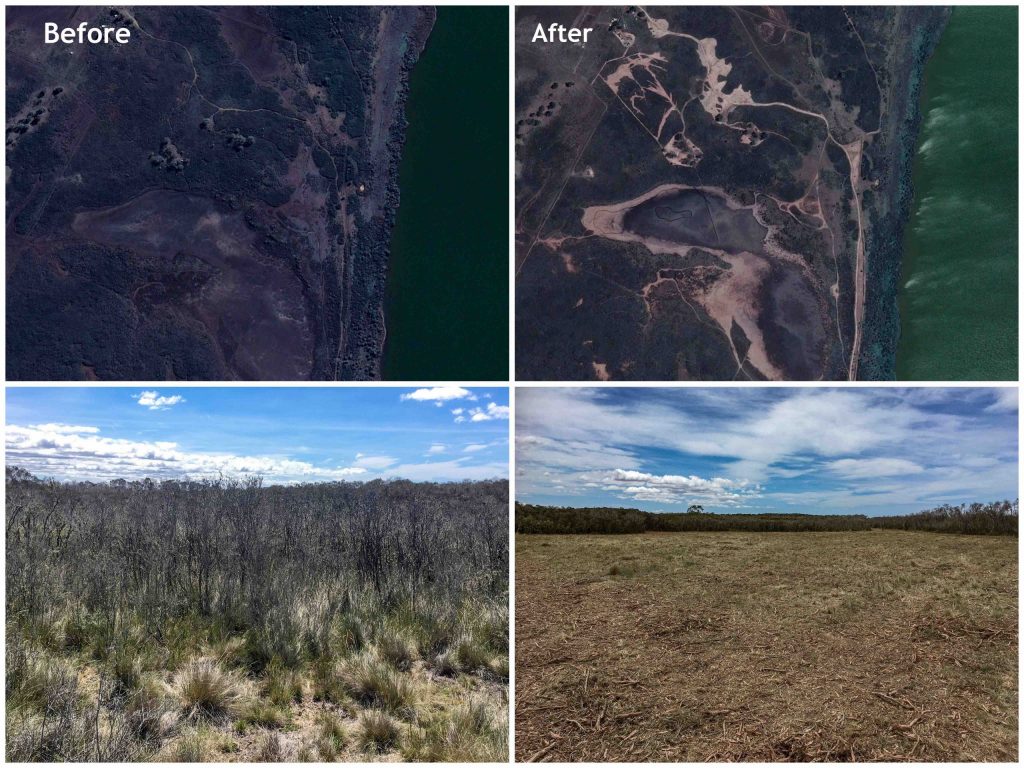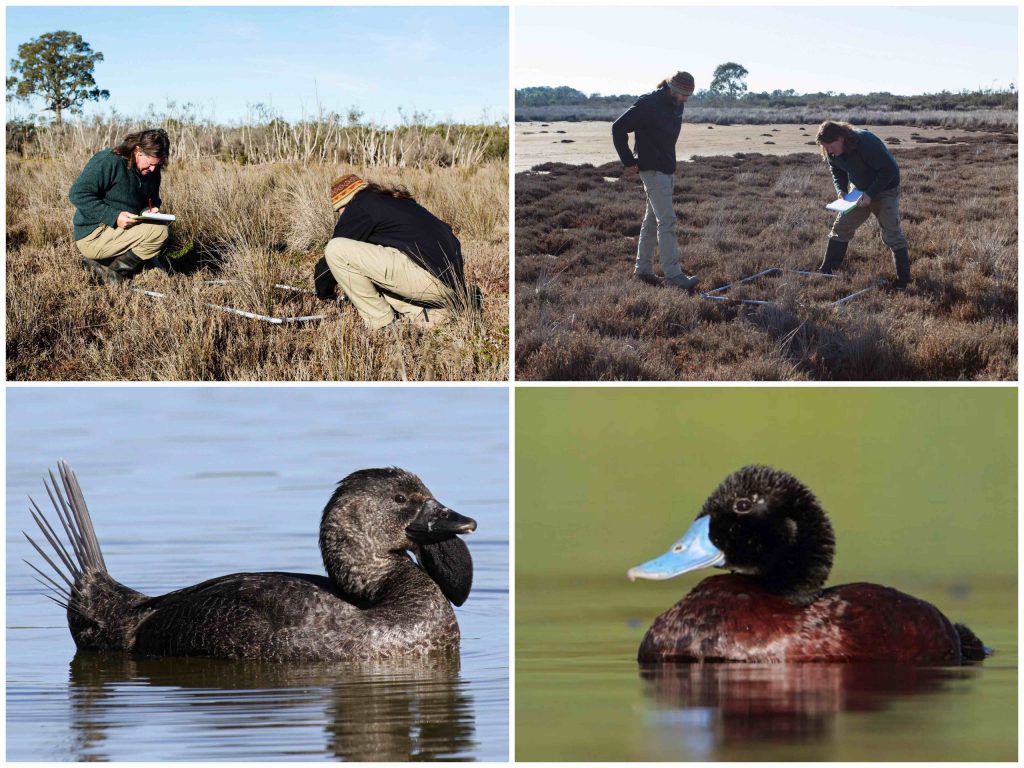As part of the Victorian Coastal Wetland Restoration program, works are underway on our Gippsland Lakes saltmarsh site with vegetation monitoring and a weed removal program.
Vegetation mapping across the 100 ha site revealed quality brackish grassland areas (EVC class 934) that have been shrinking in size due to encroachment by the shrub Melaleuca ericifolia or swamp paperbark. Tussock grasslands represent treeless communities dominated by native perennial tussock grasses, with the principle plant families represented in tussock grasslands including Poaceae, Asteraceae, Fabaceae, Geraniaceae, and Chenopodiaceae.
‘While the swamp paperbark is a generally a significant species of the Victorian estuarine wetlands, these shrubs are encroaching on the open grassland community and limiting important bird nesting grounds’ explains Greening Australia’s project manager Martin Potts .

During the rainy season at times of high water, the tussock grasslands act as important habitat for waterbird nesting, particularly the threatened Blue-bill Duck, Oxyura australis and the locally culturally significant Musk Duck, Biziura lobata.
“Waterbirds prefer to nest in the tussock grasslands along the land/water boundary where they can easily access the water to forage for food and hide from predators among the tall grasses,” Martin explains.
Birdlife Australia is part of this site’s project team and are setting up monitoring sites within the newly opened up grasslands to monitor their use by birds, particularly once the current drought in the Gippsland Lakes finally breaks.

Musk Duck photo credit: https://ebird.org/species/musduc1
Blue-bill Duck photo credit: http://www.birdlife.org.au/bird-profile/blue-billed-duck
